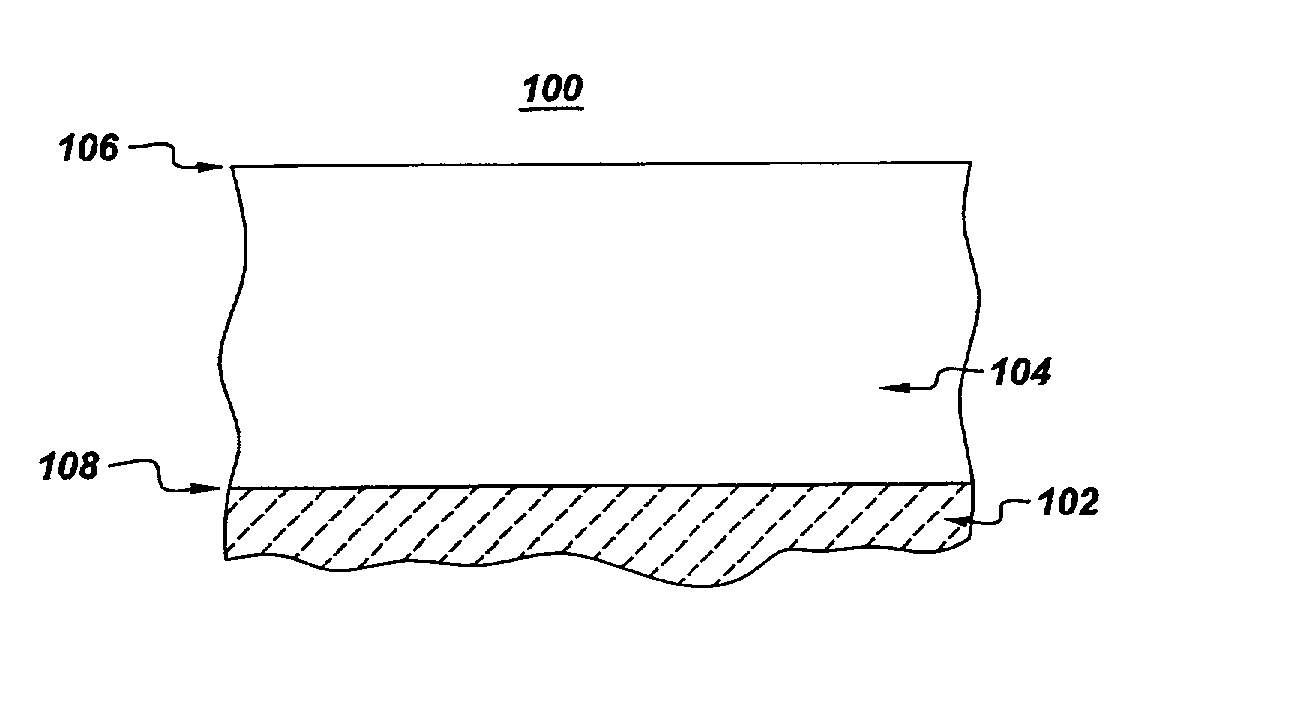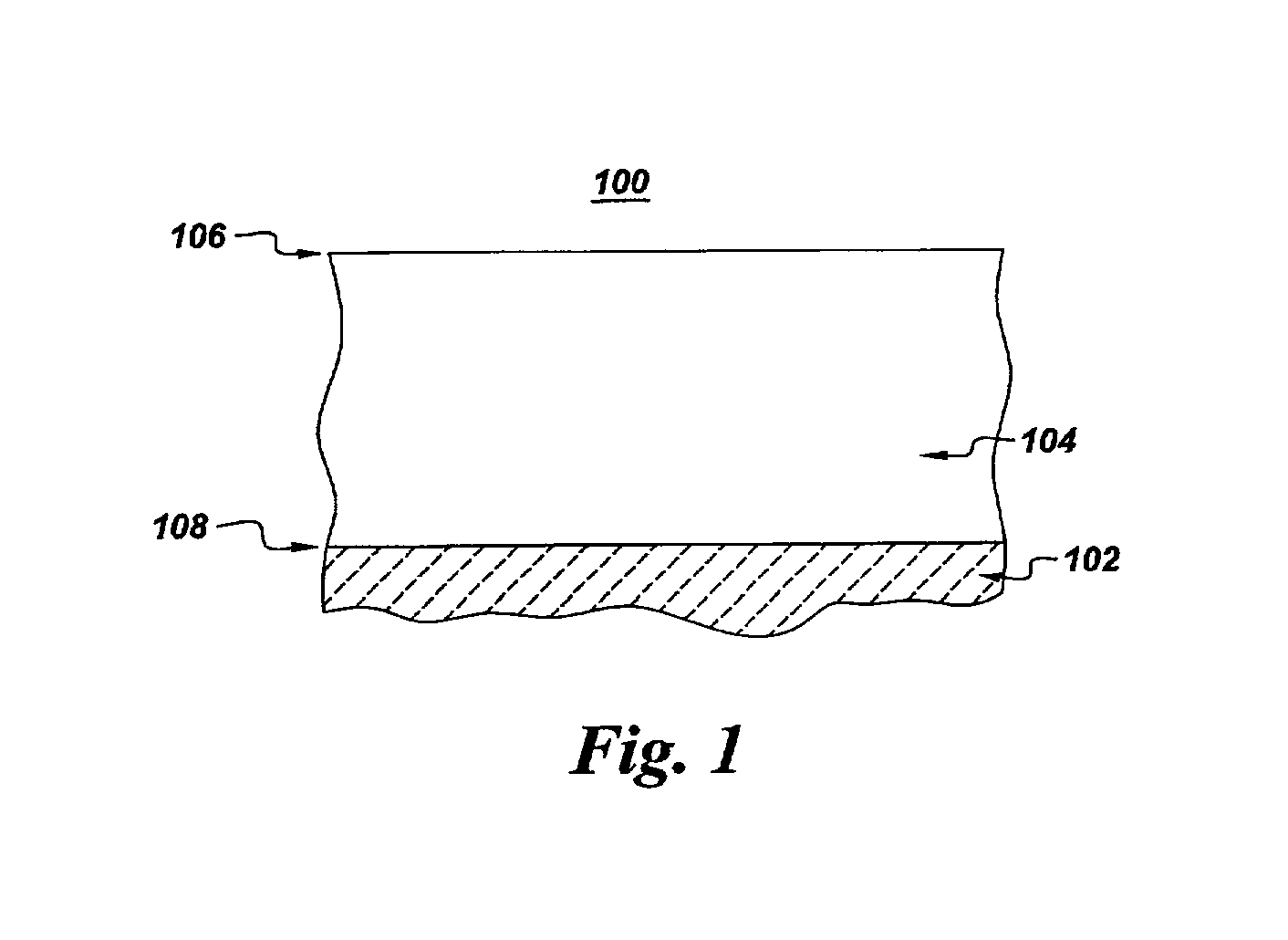High-temperature articles and method for making
a technology of high-temperature articles and high-temperature materials, applied in the field of oxidation-resistant coatings, can solve the problems of introducing the risk of additional coating damage, adverse effects on the performance of nickel-aluminide-based coatings, and loss of aluminum during deposition, so as to enhance the mechanical and and enhance the oxidation-resistant properties of coatings 104
- Summary
- Abstract
- Description
- Claims
- Application Information
AI Technical Summary
Benefits of technology
Problems solved by technology
Method used
Image
Examples
Embodiment Construction
[0028] The following description is intended to further illustrate the advantages of certain exemplary embodiments of the present invention, and should not be construed as limiting the scope of the invention. Two groups of superalloy substrates were each coated with an about 40 micrometer thick layer of NiCrAlZr alloy, using ion plasma deposition (IPD). In one group, herein referred to as "Group A," the coating composition was, in atomic percent, about 33% Al, about 10% Cr, about 0.5% Zr, and the balance Ni. In the other group, herein referred to as "Group B," the coating composition was, in atomic percent, about 35% Al, about 5% Cr, about 1.2% Zr, and the balance Ni. For each group of substrates coated, a subset was further coated with a about 10 micrometer thick layer of material consisting essentially of aluminum using IPD. After deposition, the coated samples were subjected to a vacuum heat treatment of two hours at 1100.degree. C. to form a single-phase reacted coating layer of...
PUM
| Property | Measurement | Unit |
|---|---|---|
| thickness | aaaaa | aaaaa |
| thickness | aaaaa | aaaaa |
| thickness | aaaaa | aaaaa |
Abstract
Description
Claims
Application Information
 Login to View More
Login to View More - R&D
- Intellectual Property
- Life Sciences
- Materials
- Tech Scout
- Unparalleled Data Quality
- Higher Quality Content
- 60% Fewer Hallucinations
Browse by: Latest US Patents, China's latest patents, Technical Efficacy Thesaurus, Application Domain, Technology Topic, Popular Technical Reports.
© 2025 PatSnap. All rights reserved.Legal|Privacy policy|Modern Slavery Act Transparency Statement|Sitemap|About US| Contact US: help@patsnap.com


